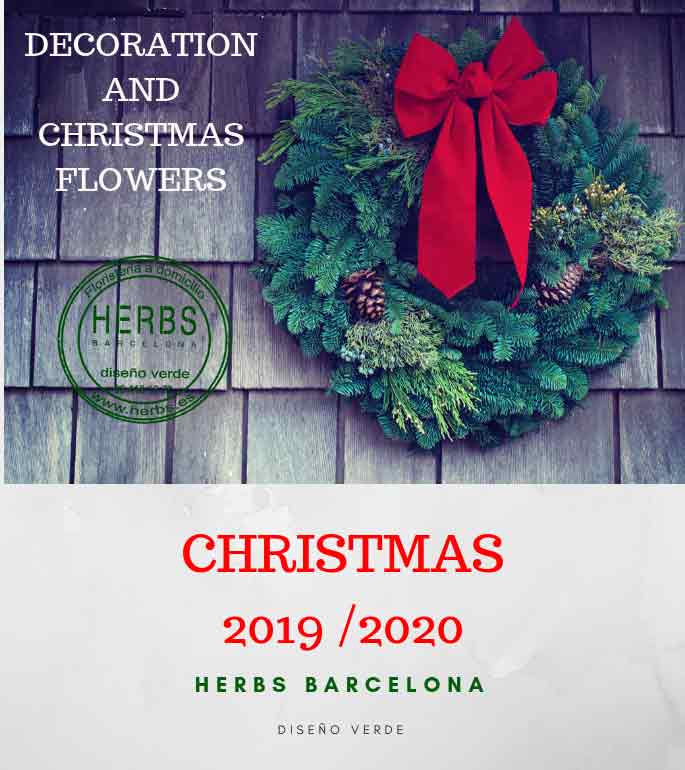Notice: Trying to access array offset on value of type null in /homepages/11/d439567934/htdocs/herbsingles/wp-content/themes/plantmore/functions.php on line 52
Flowers to decorate at Christmas
Posted by : Tiser | On : 27/10/2023
Flowers to decorate at Christmas parties
Christmas is approaching, infecting us with its spirit of solidarity and love. In these moments leading up to the great holiday, we are delighted to adorn the whole house with the primary purpose of uniting the family, spreading the joy of the birth of Jesus to friends and neighbors.
Plants play a fundamental role in this decoration and, with the knowledge of the history of Christmas parties, it is easy to understand why some elements are so valued. Some important symbols of Christmas are related to Christ himself, considered the “tree of life.”
Pine, for example, was for many years the tree of choice in the northern countries because it was the only one that remained green and beautiful even with all the cold and snow in winter.
Our culture, formed by these western peoples, immediately adopted the pine tree as a Christmas symbol as well.
Other important symbols are the red balls that traditionally symbolize the fruits of the tree of life. Therefore plants with flowers and red fruits come naturally into the Christmas decoration.
Because we live in a tropical country, we should always try to choose the green and red plants that will be in full bloom and or fruiting at Christmas.
The choice of pine is very important, especially if you want to plant it in the garden later. Preferred are:
European Thuja (Chamaecyparis psifera ‘Stewart’)
Golden-throated (Chamaecyparis plumosa ‘Aurea’)
Dutch Thuja (Cupressus macrocarpa)
Pasta Thuja (Chamaecyparis pisifera ‘filifera-aurea’)
Golden Cypress (Chamaecyparis obtusa ‘cripssii’)
Hinochi Cypress (Chamaecypares obtusa ‘nana gracillis‘)
Parana Pine (Araucaria angustifolia)
Take care when purchasing your Christmas pine, choose a healthy and showy seedling, with the lump proportional to your height.
It is common for profiteers to sell branches stuck in the ground during this time.
After the care continues, place it in a well-lit place indoors and do not forget to water regularly.
After Christmas it is possible that even with these precautions, your plant does not survive because it suffers a lot indoors. Plant it as quickly as possible in the garden so you can fully recover.
It has very green leaves and red star-shaped bracts, is quite rustic and can adorn the outside garden in the form of shrubs and the interior of the residence, planted in pots.
There are many varieties to choose from, simple to folded, and with white flowers including.
Red Mussaenda
The garden also deserves special care. Flower beds and gardeners should not be forgotten.
Great options are the Garden Joy (Salvia splendens) and the pepper (Capsicum baccatum), which must be planted well in advance so that they can develop well until Christmas.
Use as a substrate a part of garden land mixed with two parts of vegetable land.
Water regularly and fertilize with NPK 10-10-10, as recommended by the manufacturer, that they will remain beautiful all summer long.
The Red Mussaenda (Mussaenda erythrophylla) (Figure opposite) is also a very interesting plant (note that its flower is star-shaped… another Christmas symbol that needs no explanation) and can be carried as a shrub or as a climbing vine. with the need.
My favorite however is the Tear of Christ (Clerodendron thomsonae). This time of year it blooms intensely and the combination of its bright green foliage with the red flowers surrounded by the white chalice gives an incredible snowy tree feel at night, when the small Christmas lights illuminate its entire length. It is a magical combination, hard to describe.
Tear of Christ
There is no point in beautiful plants and matching with Christmas if the lawn and shrubs are not properly trimmed and tended.
Ultimately, corrections can be made last minute with special lawn dyes.
The lighting is a separate show. Wrap the stem and apparent tree branches with white mini-lamps for spectacular effect, being very careful with the insulation of the electrical wiring and always turning off during the day and when rain threatens to fall.
Take the opportunity to prepare garlands and arrangements with natural plants by adding branches of pepper, ivy, holly, nandina, fern and cypress, pine cones, apples and dried flowers colored red and gold, and always end up with very wide and showy ribbon bows, bought in stores. Craft


